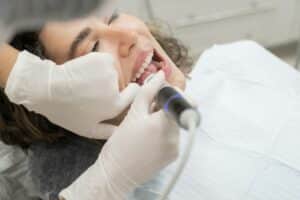When restoring a smile after tooth loss, several treatment options are available to address the physical, functional, and aesthetic challenges associated with missing teeth. Dental bridges are a popular, non-invasive, and cost-effective solution that can provide a seamless and natural-looking restoration, allowing patients to regain the confidence to smile and chew comfortably. At Pickering Dental Services, our experienced team of dental professionals understands the importance of a complete and healthy smile and is committed to providing personalized and comprehensive dental care to patients seeking to restore their oral health with dental bridges.
In this informative blog post, we will dive into the world of dental bridges, discussing what they are, the different types available, and how they can benefit patients experiencing tooth loss. We will explain the process of getting a dental bridge and provide guidance on caring for your dental bridge to ensure its longevity and durability. By understanding this restorative solution more deeply, patients will be better equipped to make informed decisions about their dental care and confidently choose the treatment best suited to their unique needs.
What Are Dental Bridges?
A dental bridge is a prosthetic device designed to replace one or more missing teeth by creating a “bridge” between the remaining natural teeth or dental implants. Dental bridges are typically composed of two crowns on either side of the gap, known as abutment teeth, and a false tooth or teeth, called pontics, in between. The pontics are usually made from durable materials such as porcelain, gold, alloys, or a combination of these materials to ensure a natural appearance and long-lasting functionality.
Types of Dental Bridges
1. Traditional Dental Bridges
Traditional dental bridges are the most common type of bridge and involve the placement of dental crowns on the abutment teeth on either side of the gap, with the pontics suspended in between. This type of bridge is suitable for patients with strong, healthy teeth on either side of the missing tooth or teeth.
2. Cantilever Bridges
Cantilever bridges are similar to traditional bridges but only require a single abutment tooth for support. They are typically used when there is only one healthy tooth adjacent to the gap. However, due to their reliance on a single tooth for support, cantilever bridges may not be recommended for areas of the mouth that experience high biting forces, such as the back molars.
3. Maryland Bridges
Maryland bridges are a more conservative and less invasive alternative to traditional bridges. Instead of dental crowns, this type of bridge is held in place by metal or porcelain wings bonded to the backside of the adjacent teeth. Maryland bridges are an ideal option for patients who wish to preserve their natural tooth structure but may not be suitable for areas with strong biting forces.
4. Implant-Supported Bridges
Implant-supported bridges utilize dental implants for support rather than relying on natural teeth. This type of bridge is ideal for patients with multiple missing teeth in a row or those who lack sufficient healthy teeth to support a traditional or Maryland bridge. Implant-supported bridges offer increased stability, preserve the integrity of the adjacent teeth, and help prevent jawbone deterioration.
The Process of Getting a Dental Bridge
The dental bridge procedure typically consists of several steps:
1. Preparing the Abutment Teeth: The dentist will prepare the abutment teeth by removing a small amount of tooth structure to accommodate the dental crowns. Impressions or digital scans of the teeth will then be taken to create a customized dental bridge.
2. Temporary Bridge Placement: A temporary bridge will be placed to protect the prepared teeth and maintain the space while the permanent bridge is being fabricated by a dental lab.
3. Permanent Bridge Fitting: Once the custom dental bridge is ready, the dentist will remove the temporary bridge and check the fit and appearance of the permanent bridge. If the fit is accurate and comfortable, the dentist will cement the bridge into place, completing the restoration.
4. Follow-Up Appointments: Regular dental check-ups and cleanings will ensure the bridge remains in good condition and functioning properly.
Caring for Your Dental Bridge
Dental bridges can last many years with proper care. Here are some tips to help maintain the durability and function of your dental bridge:
1. Adopt a Consistent Oral Hygiene Routine: Brush your teeth twice a day with a soft-bristled toothbrush and fluoride toothpaste, floss daily, and use a mouthwash to keep your mouth clean and healthy, prevent gum disease, and minimize potential damage to the dental bridge.
2. Schedule Regular Dental Checkups: Visit your dentist at least twice a year for professional cleanings and examinations to monitor the health of your dental bridge and address any potential issues early on.
3. Maintain a Balanced Diet: Eating a nutritious diet and minimizing sugary and acidic foods can help keep your teeth and gums healthy, ultimately prolonging the life of your dental bridge.
4. Avoid Hard or Sticky Foods: Chewing on hard or sticky foods can damage your dental bridge. Exercise caution when consuming such items, and avoid using your dental bridge to bite down on hard objects like ice or pencils.
Conclusion
Dental bridges serve as an effective and reliable solution for patients looking to restore their smile after tooth loss. With various types of bridges available, it’s essential to consult with your dental professional at Pickering Dental Services to determine the most suitable option for you. By understanding the benefits, process, and care for dental bridges, you can confidently embark on the journey toward a complete and radiant smile.
Ready to explore dental bridge options and restore your complete smile? Our professional and compassionate team at Pickering Dental Services is here to help. Schedule an appointment with us today to discover the best Ontario restorative dentistry solution for your individual dental needs and create a confident, beautiful smile.



